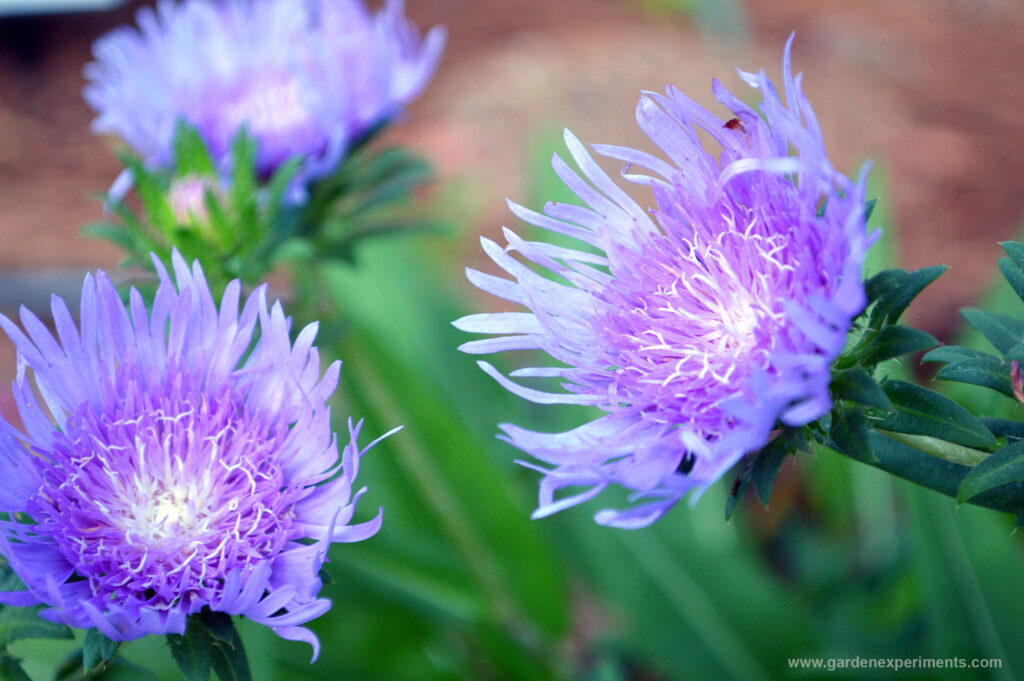A few years ago, I acquired a new plant that has quickly become one of my favorites – Stokes Aster (Stokesia laevis). These stunning purple-blue flowers simply captured my heart.
I really like incorporating native plants and flowers into my garden. They are easy to grow and very hardy AND they attract butterflies and hummingbirds. (Read my top five benefits of gardening with native plants). Some native plants are very interesting too! Check out the Giant coneflower to see what I mean. Have you ever seen anything like that?

How to Grow Stokes Aster
Stokes aster is perennial and grows to be around a foot tall (mainly the flowers reach this height). The leaves are long and lanceolate. The leaves on my plant remain throughout all seasons. I suspect it would die back in zones with harsher winters (hardy up to zone 5). It stays pretty warm here in Mississippi.
The flowers are about 2 to 3 inches in diameter and will show up in mid-May and bloom through July, sometimes into early September. In order to keep the plant producing flowers, deadhead the flowers before they turn to seed.
It likes a medium amount of water and grows well in semi-moist, but well-drained soils, and in full sun. However, my plant is in relatively dry soil in part shade. It wilts in the hot sun in the afternoon but perks back up each evening. It seems to be pretty drought tolerant (as I don’t water a lot); overall, it is very low maintenance.
This plant will continue to spread, so you’ll need to divide it every 3 or 4 years.
Native Range and USDA Hardy Zone
The native range of Stokes aster is restricted to a few southeastern states: Georgia, Louisiana, North and South Carolina, Mississippi, Alabama, and Florida.
Stokes aster is hardy in USDA zones 5 through 9.
How to Propagate Stokes Aster
This plant can be divided in the spring or fall to create new plants. You can also take root cuttings in the fall or collect seeds. Seeds need to be sown outdoors in the fall. If you store the seeds over the winter, keep them in the refrigerator in a sealed container.
Wildlife Value of Stokes aster
Butterflies are attracted to Stokes aster for the nectar.
Interesting Fact
The genus Stokesia only includes one species of plant. The genus was named after Jonathan Stokes (1755 – 1831), an English physician and botanist.

